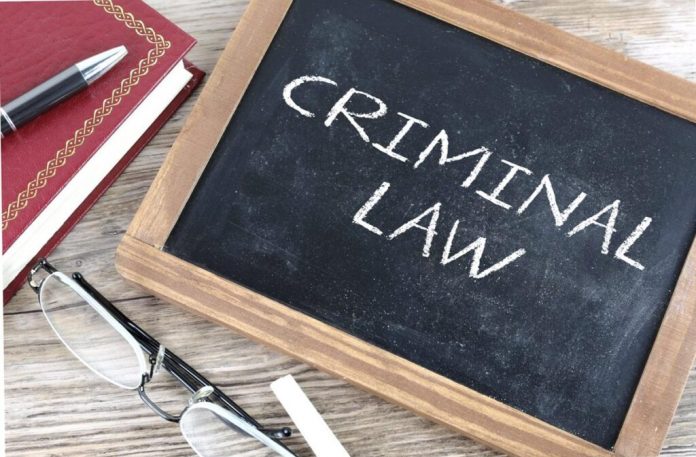This article is written by Satyaki Deb, an LL.M. candidate from the Rajiv Gandhi School of Intellectual Property Law, IIT Kharagpur. This article deals with the case law-centric study of the various dimensions of Section 457, CrPC, which lays down the procedures to be followed by police upon seizure of property.
It has been published by Rachit Garg.
Table of Contents
Introduction
The police and various other investigative authorities routinely seize properties all over the country under various provisions of different statutes like the Indian Penal Code, 1860; Narcotic Drugs and Psychotropic Substance Act, 1985 (NDPS); Prevention of Food Adulteration Act, 1954, etc. These seized articles play a vital role in the investigations and in most cases, also play a significant role in the trial stages for the purpose of evidence. Since India’s investigation and the trial process generally moves very slowly and with thousands of such cases piling up, the seized properties generally pile up much faster than they can be disposed of. Moreover, due to the prolonged gathering of dust, most of these seized properties lose their economic value and are often misappropriated or sold for spare parts by unscrupulous police officials or third parties.
Chapter XXXIV (Sections 451–459) of the Criminal Procedure Code, 1973 (CrPC) deals with provisions for the disposal of seized property and is the most relevant portion of the Indian laws that has the answer to curb the hundreds of crores of rupees losses in national wastage of seized properties. This article deals with the various dimensions of Section 457, CrPC, which is a prime provision under this Chapter. In this regard, various other related provisions under this Chapter shall also be relevantly touched upon from the perspective of precedent case laws.
Meaning of property under Section 457 CrPC
Section 457 of CrPC envisages procedures to be followed by police upon seizure of property. So, it becomes pertinent to understand what the word “property” signifies herein. This Section and its parent Chapter XXXIV deal with the disposal of four kinds of properties. They are as follows:
- Properties used in the commission of an offence.
- Properties on which an offence has been committed.
- Properties which have been produced before the court.
- Properties which are in the custody of police or court.
Based on their sources, these properties can have sources like properties found while arresting a suspect/accused, properties found under suspicious circumstances with regards to the commission of a crime or properties allegedly stolen or robbed.
Section 457 CrPC
As briefly stated before, Section 457 of the CrPC deals with the procedure to be followed by police upon seizure of property. It is imperative now to study this Section with a magnifying glass. This provision replaced Section 523 of the old Criminal Procedure Code of 1898. The police need to comply with the procedure envisaged under Section 457 CrPC after they seize any property. According to this provision-
- Sub-section (1) of this Section lays down that after the police have seized any property under the CrPC and if such property is not produced at the inquiry or trial stage in a criminal court, then the Magistrate is empowered with discretionary powers to issue orders that will ensure the disposal of such property or delivery of such property to the person entitled to its possession. In case the identity of the person entitled to the possession of the seized property is not known, then in such cases, the Magistrate may pass orders as he deems fit to ensure the proper custody and protection of such property.
- Sub-section (2) of this Section states that if the identity of the person entitled to the possession of the seized property is known, then the Magistrate may at his discretion impose any conditions for delivery of such property to the entitled person. Even unconditional delivery to the entitled person is permissible under this provision if the Magistrate deems fit. In case the identity of the person entitled to the possession of such seized property is unknown, the Magistrate may order the seized property to be detained and issue a proclamation specifying the articles making up such property. Any person claiming such seized property can appear before the Magistrate and may claim such seized property after establishing his claim to it within a period of six months from the date of proclamation.
Case laws related to Section 457 CrPC
Following are some of the relevant case laws related to Section 457 CrPC:
M.Muniswamy v. the State of A.P. (1992)
In this case, the scope of the Magistrate’s power to pass orders as to the disposal or delivery of such property to the person entitled to such seized property was dealt with. This case has been discussed in relative detail as follows:
Brief facts of the case:
The Central Bureau of Investigation (CBI) had seized several documents, keys to the locker, and some cash under two seizure lists against one Sri Raghavayya under relevant provisions of the Prevention of Corruption Act, 1988. The accused wanted the CBI to return their seized documents, articles, and locker key. Starting at the CBI Special Court in Hyderabad, the matter reached the Hon’ble Supreme Court.
Issue:
The main question before the Hon’ble Court was whether the seized documents and locker key should be returned or not.
Judgement
The Hon’ble Court touched upon the nuances of not just Section 457 but also Sections 451, 452 and 456. They all fall under the same Chapter XXXIV and cannot be interpreted in isolation. The Hon’ble Court overturned Balaji v. State of A.P. (1976) and State v. Belquis Sultana (1985) in this case because these cases wrongly assumed the following-
- That the courts get jurisdiction only if the seizure of property is reported by the police to the Magistrate and not otherwise.
- That the court can pass orders with respect to the seized property only when the police produce the seized property in the court during an inquiry or trial.
- That only the court inquiring or trying the offence can pass orders under Section 457.
- That both Sections 451 and 457 deal with the power of Magistrates to deal with seized properties during/pending the inquiry or trial stage.
The Hon’ble Court reasoned along the lines of Justice V. R. Krishnaiyer’s Ram Prakash Sharma v. State of Haryana (1978) and held that:
- In cases where the seized property is not produced before the court by the police, Section 457 will be applicable to dispose of such property.
- When the seized property has been otherwise produced before the court, the governing provision will be Section 451 and such seized property will be disposed of according to it.
- Post the inquiry or trial stage, if the issue of disposing of seized property arises, then the governing section to dispose of such property shall be Section 452.
Thus, it can be stated that Section 457 applies to the disposal of any seized property at a stage other than or before the commencement of an inquiry or trial (eg: investigation stage), Section 451 applies to the custody and disposition of seized property pending trials, and Sections 452 and 456 deal with the disposition of seized property after trials. In other words, Section 457 needs to be read in association with the other provisions of Chapter XXXIV, and the phrase in Section 457 “such property is not produced before a Criminal Court during an inquiry or trial” does not indicate any stage of proceedings but merely qualifies the seized property.
After analysing the judgement, it can be stated that one of the prime reasons for such a contextual interpretation was that the police cannot have the leeway to seize property and not produce or report about the same. The police simply cannot dispose of seized property in any manner they like. The Hon’ble Court rightly held that any Magistrate can dispose of seized property under Section 457 and not necessarily the one who may inquire about or try the accused. Here, any Magistrate does not mean that the accused can cherry-pick Magistrates. Only the Magistrate who can inquire or try the accused or any Magistrate under whose jurisdiction the property has been seized is empowered to dispose of seized property under Section 457. Such a Magistrate need not wait for the police to report or produce seized property but can pass orders under Section 457 even when the interested parties approach such a Magistrate.
One pertinent point to note in this regard, as held in this judgement, is that the Magistrate needs to apply his judicial discretion considering all relevant aspects before delivering any seized property back to interested parties who have sufficiently proved their claims to such seized property. He needs to ensure by imposing conditions or otherwise that such disposal of the property must not hinder the course of justice and that such seized property’s return at the time of trial if required is ensured. Thus, given the circumstances, the petitioners were held entitled to the return of their seized documents and locker key.
Sunderbhai Ambalal Desai v. the State of Gujarat (2002)
In this case, the two-judge Learned Bench answered questions regarding the interpretation and mode of implementation of Sections 451 and 457. This is another classic case that shows us how the nuances of Sections 451 and 457 are intertwined and how expeditiously and judiciously a concerned Magistrate needs to exercise their underlying powers. Simply speaking, in this case, some of the police officers were mainly accused of misappropriation of seized articles (“mudammal” articles) from the police station’s “malkhana.” When the matter reached the Hon’ble Supreme Court, the following relevant points were held regarding disposals and procedures related to seized property:
- Seized articles need to be submitted or reported to the Magistrate within one week of seizure.
- Due bonds, security and guarantees should be taken by the Magistrate while disposing of the seized property to prevent such evidence from being lost, altered or destroyed.
- Detailed ‘panchnama’ should be made before disposing of seized property.
- Before disposing of seized property, photographs should be taken of seized property and such photographs should be attested or countersigned by complainants and accused persons as well as the person receiving custody of such seized articles.
- Regarding seized vehicles, since there is no use in keeping such vehicles for long times in police stations, the Magistrate should pass appropriate orders immediately by taking necessary bonds, securities and guarantees that will ensure the return of the seized vehicle, if required at any point in time. This can be done pending the hearing of applications for the return of such seized vehicles.
- If there is a case where the seized vehicle is not claimed by the owner or accused or insurance company or any other third person, then the Magistrate may auction off such seized vehicle. The order should be passed within a window of six months from the date of production of such seized vehicles in the court.
- Regarding seized liquor, it was held that since there is absolutely no requirement to keep large quantities of liquor at the police stations, they should not be stored on and on for large periods of time at the police stations. Necessary samples for analysis should be taken and after necessary panchnama is made, such seized liquor should be disposed of promptly according to the order of the Magistrate.
- Seized articles should not be kept at police stations for not more than 15 to 30 days and this should be ensured by the immediate actions of the Magistrate.
The rationale or objective behind such prompt and judicious disposal of seized property under Sections 451 and 457 will ensure the following objectives/purposes:
- The owner of such seized articles will not suffer due to their misappropriation or prolonged non-use.
- Public Exchequer’s money will be saved because the prompt disposal of the seized property will not require the court or the police to keep their prolonged safe custody.
- If the panchnama of the seized articles is prepared properly, then such panchnama can be produced in evidence during trial instead of producing the seized articles.
- The courts would be able to exercise their jurisdictions promptly and record evidence swiftly to prevent tampering of the articles.
General Insurance Council v. the State of Andhra Pradesh (2010)
In this case, further directions were given with respect to procedures and the disposal of seized property. The ones relevant to this article have been portrayed as follows:
- Ordinarily, the release of seized vehicles should be made within 30 days from the date of the application.
- Insurers may be permitted to make separate applications for the release of the recovered vehicles upon intimation of the same from the concerned courts.
- The insurer would submit an undertaking or guarantee to remit proceeds from the sale or auction of seized vehicles if the Magistrate rules that the insurer is not the rightful owner of such seized vehicles. Personal bonds may not be insisted from the insurers considering the corporate nature of the insurer.
- All state governments, union territories, and Director Generals of Police should ensure the macro implementation of the concerned statutory provisions and at the district level, the concerned Inspector Generals, Commissioners, and Superintendents of Police must ensure speedy disposal of seized vehicles.
- If any petitioner or aggrieved party reports non-compliance, such erring officials will be dealt with iron hands.
Conclusion
Section 457 of the CrPC remained for a long while one of the least implemented provisions by the executive and these led to grievances of numerous aggrieved parties. The cumulative value of such losses ran into hundreds of crores of rupees. Primarily because of these broad and deep-running grievances, the Hon’ble Supreme Court, as depicted in the above precedent case laws, gave necessary instructions on the procedures and disposal of seized properties. These instructions were an absolute necessity, but their sporadic implementations somewhat neutralise the sound effects of these judgements, and this needs to change at the earliest.
Frequently Asked Questions on Section 457, CrPC (FAQs)
What happens when a person who has possession of property (seized) fails to prove his legal claim to such property?
In such a case, the Magistrate may order that such property shall be at the disposal of the state government and sold or auctioned by it. The concerned person shall have a right to appeal against any such order to the court to which appeals ordinarily lie from convictions by the Magistrate.
Is there any time limit for the production and release of seized property?
Whenever any property is seized by the police or other investigating authorities, it is the duty of the seizing officer or the concerned SHO to produce it before the concerned Magistrate, within one week of such seizure, and the court, after giving due notice to the concerned parties, is required to pass an appropriate order for its disposal promptly, ordinarily, within a period of one month of producing such seized property in court.
References
- https://districts.ecourts.gov.in/sites/default/files/Ninth%20Topic.pdf
- https://www.scconline.com/blog/post/tag/section-457-cr-pc/
- http://lawhelpline.in/PDFs/CRIMINAL_LAWS/Sec_451_452_457_Cr_PC.pdf
Students of Lawsikho courses regularly produce writing assignments and work on practical exercises as a part of their coursework and develop themselves in real-life practical skills.
LawSikho has created a telegram group for exchanging legal knowledge, referrals, and various opportunities. You can click on this link and join:
Follow us on Instagram and subscribe to our YouTube channel for more amazing legal content.
 Serato DJ Crack 2025Serato DJ PRO Crack
Serato DJ Crack 2025Serato DJ PRO Crack











 Allow notifications
Allow notifications


